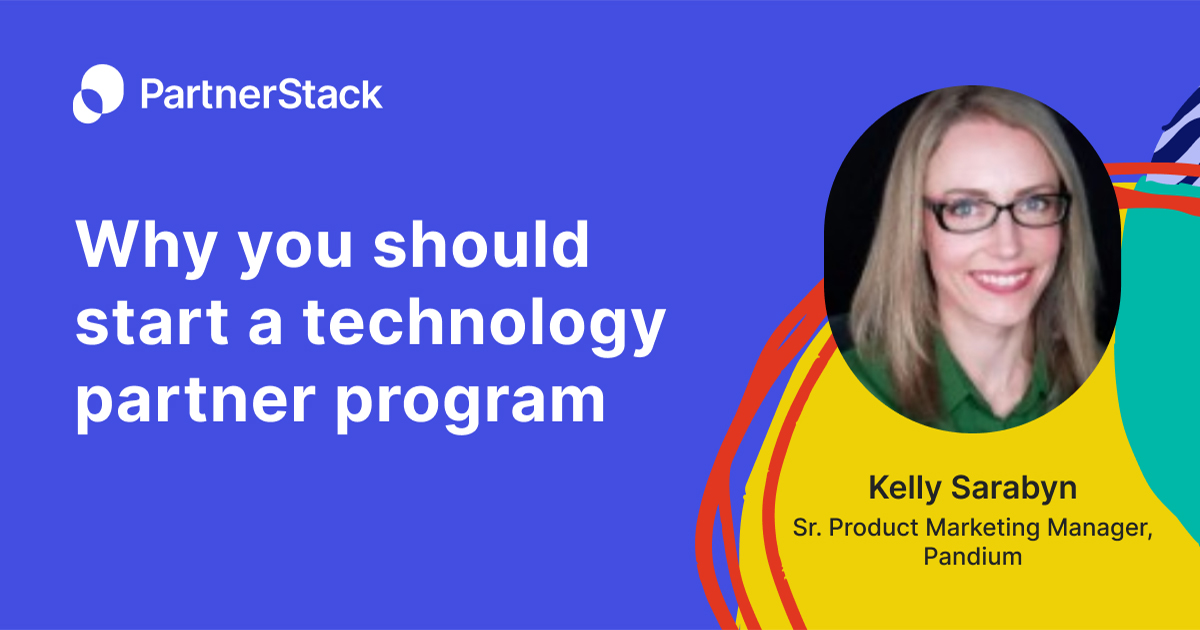While it’s becoming more common for companies to establish programs for marketing, referral, and reseller partners, many SaaS companies have yet to explore the potential of technology partnerships to drive growth.
Technology partners are other software companies that your product is built to integrate with, or who build integrations for your product themselves — a reason they’re often referred to as integration partners.
But an integration alone does not make a partnership. The secret to why technology partnerships is work is the way they make your product more discoverable.
More business buyers are conducting digital discovery and purchasing through online marketplaces, a trend accelerated by office lockdowns and the shift to remote work. Forrester predicts that 17 per cent of B2B purchasing will soon be through e-commerce and online marketplaces, ranging from large players like AWS Marketplace and the Salesforce AppExchange to more niche (but targeted) channels.
Business buyers are discovering new products in these marketplaces, and they often prefer the convenience of purchasing through a marketplace versus a lengthy sales process.
In this article, we’ll explore how a technology partners can help you:
- Generate more qualified leads
- Drive revenue from referrals
- Create new revenue channels
- Attract more product integrations
- Close the most important deals
Generate more qualified leads
The most obvious benefit of technology partnerships is one common to many partner programs: they drive qualified leads you wouldn’t get elsewhere.
When you integrate with large platforms with their own marketplaces, your product becomes immediately discoverable by buyers who are looking for tools that work with their existing tech stack.
When we spoke to Jeff Reekers, Chief Marketing Officer at Aircall on their approach to tech partnerships, he told us: “Today, a lot of B2B buyers purchase through the app marketplaces of larger companies, like HubSpot, Zendesk, and Salesforce. When we first got started, a significant number of our initial customers found us through these exchanges.”
Larger marketplaces will also provide you with contact and behavioral data on those who clicked on your page or attempted to install your integration. Many of them will be qualified prospects for your marketing and sales team to follow up with.
But that doesn’t mean that focusing on the largest marketplaces alone is a sound strategy, especially if those marketplaces already contain products that compete with yours. “The bigger the marketplace, the harder it is to get on the radar of the users,” Jeff continued. In addition to larger marketplaces, he suggests looking for newer platforms that aren’t as saturated. “HubSpot’s app directory was younger when we entered it. We were the first company in our category, and so there was an open opportunity to solve a real problem for their users.”
Like with any other lead generation channel, you have to put work into promoting it if you want to stand out from competitors and see real results. Paying for marketplace ads, sharing the integration through your existing marketing channels, and asking customers to leave reviews all help to get increased visibility and leads from large marketplaces.
In addition to leads you generate from your partners’ marketplaces, if you create your own integration marketplace, partners who appear in your marketplace will send you leads from their webpages and marketing campaigns on the integration.
Related: What are marketing development funds and how can you use them?
Drive revenue from referrals
Since your technology partners usually have a similar audience to you and are well-versed in your product, they can make great referral partners.
If you have an existing referral program, technology partners can easily be rolled into it. Otherwise, make it a component of the technology partner program. For example, Mixpanel and Xero both compensate referrals for their technology partners.
You can also require that your tech partners pay you for the referrals that you send them, like Box does for higher tier partners. This can create additional revenue for your company as long as those referrals are delivering real value to your partners.
Plus, referring customers to partners can end up providing a better experience if those customers are heavily reliant on your partner’s technology, meaning there’s potential for more upfront revenue and increased customer retention.
Product integrations enhance your product and the customer experience in a scalable way. Once a product integration is built, it can have as many users as you need. And if it is well-designed, it will make your customers’ workflow more efficient and effective.
Customers who integrate your product with other systems are generally more likely to be satisfied and less likely to churn off your product. Integrations increase the functionality of your product and eliminate time consuming processes related to customers moving data between systems. As your product becomes intertwined with customers’ other systems and workflows, they become more committed to using it, and less likely to migrate away from it.
Beyond improved retention, this increased customer satisfaction can also lead to upsells and more customer-driven referrals.
Create new revenue channels
In addition to using them to drive more leads and referrals, many SaaS businesses turn their technology partner programs into direct revenue generators of their own, either by splitting revenue with partners or selling services and certification to partners.
In an analysis of the top 50 tech partnership programs, we found 50% percent of the top tech partnership programs take a revenue share from their technology partners, and forty-one percent of top programs charge partners an annual fee.
You can also require partners to purchase your services. These services are generally aimed at improving the success of the partnership. For example, SAS and Zuora require partners to get certified in their product, and VMware and Box require partners to sponsor one of their marketing events.
These paid services can also be made optional so only partners who are interested pay. For example, Salesforce sells a marketing package to tech partners, MongoDB sells technical services designed to help build an integration, and Shopify sells ads in their integration marketplace that partners can choose to buy or not.
The other way to turn tech partnerships into a new revenue stream is by charging customers to use the resulting product integrations. Usually this is done by putting integrations on higher tier plans, as Slack and Wix for business do. Other companies, like SurveyMonkey and Atlassian, sell integrations as add-ons.
See more: What great partner education looks like (with examples!)
Attract more product integrations
A well-designed tech partnership program will attract more technology partners that want to build integrations into your product, and who will be willing to spend time and resources promoting the partnership. These partner investments will extend the capabilities of your product, marketing, and sales teams.
If your product is ready for it, one of the best ways to attract more product integrations is to launch an integration marketplace of your own where your tech partners can promote their integrations with your product. And as we just discussed, running your own marketplace can become a major source of revenue itself.
Aircall has its own successful technology marketplace, and we asked CMO Jeff Reekers for his advice to other SaaS companies that want to launch marketplaces of their own. “I would recommend avoiding too many cookie-cutter connectors. Just having a connection to another software isn’t enough,” he said. “Focusing on volume without quality is not a good strategy - such integrations rarely meet the needs of your target customers, and so they will gain little traction.”
“You need a good understanding of how and why your customers want to use an integration. It takes a lot of research and customization to make an integration and a partnership successful. It’s better to invest heavily in a few tech partnerships instead of trying to do a ton on the surface level.”
So if you’re just getting started, launching a fully-fledged marketplace probably isn’t your first step. But there are other ways to use your technology partnership program to attract more integrations. Aircall attracted over 20 new product integrations in a single quarter alone by marketing the functionality of their API towards business decision makers and developers.
This highlights another critical component of attracting more integrations: providing sales and developer resources that help partners to understand how to build integrations for your product, and why they would want to. Creating marketing materials and campaigns that partners can easily access makes it easy for partners to promote the partnership.
Close the most important deals
Business buyers are looking for products that integrate together. Not having the right integrations, especially with large flagship platforms, can often torpedo a deal. Integrations can be the deciding factor in a deal, especially when a buyer is choosing amongst similar systems. A good technology partner program will ensure the integrations your prospects need and want get built and maintained.
It can also establish processes that track this influence so that your organization can recognize the full impact of tech partnerships on revenue.
Technology partnership programs are newer and can be more complicated to set up than other types of partner programs. But in a world where more software is being sold through marketplaces and interoperability is becoming increasingly important to customers, a technology partnership program can give you a competitive advantage and drive significant revenue growth for your organization.
Learn how leading SaaS companies succeed with technology partnerships in Pandium's Analysis of the 50 Top Tech Partner Programs →







.jpg)



